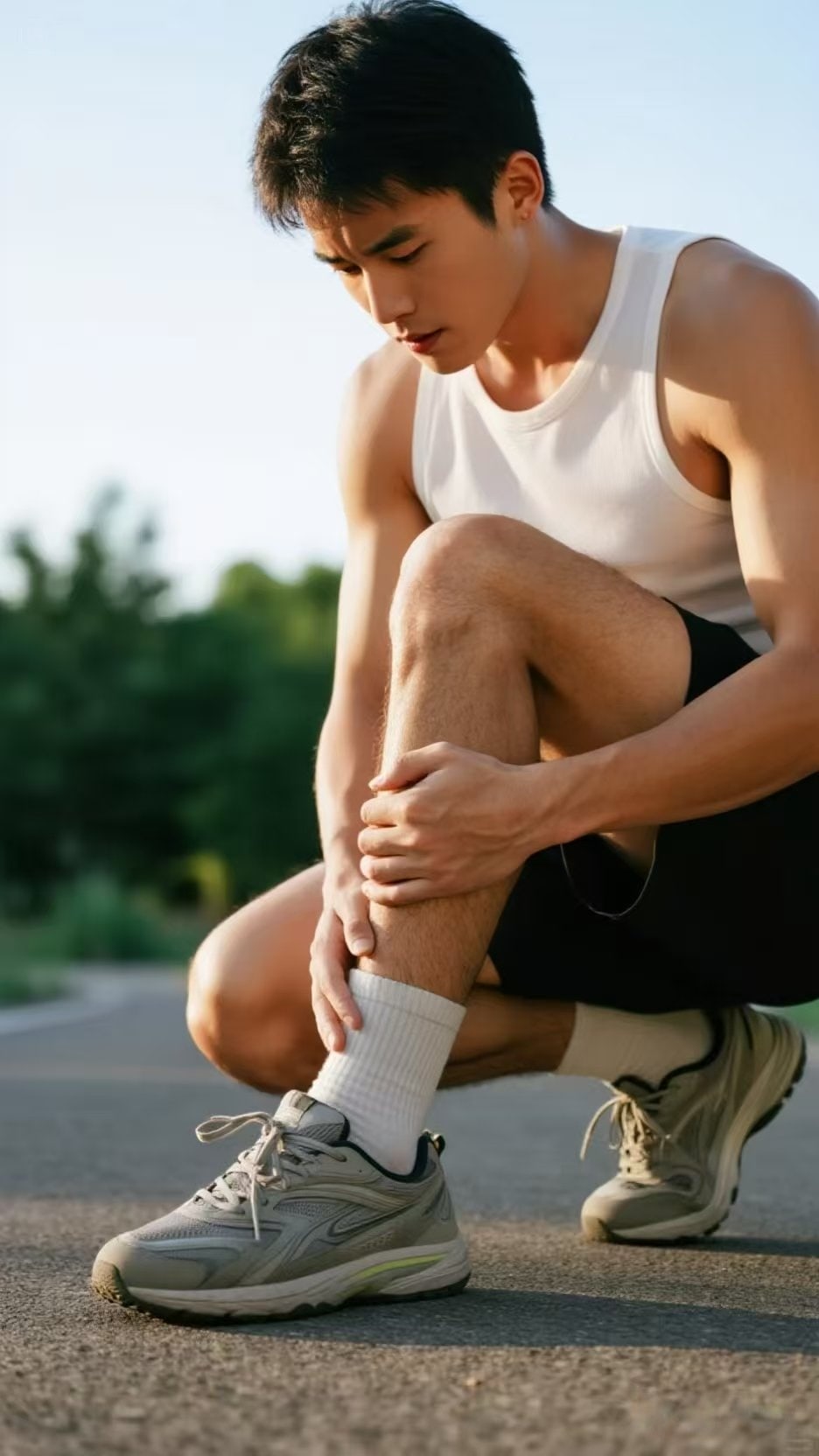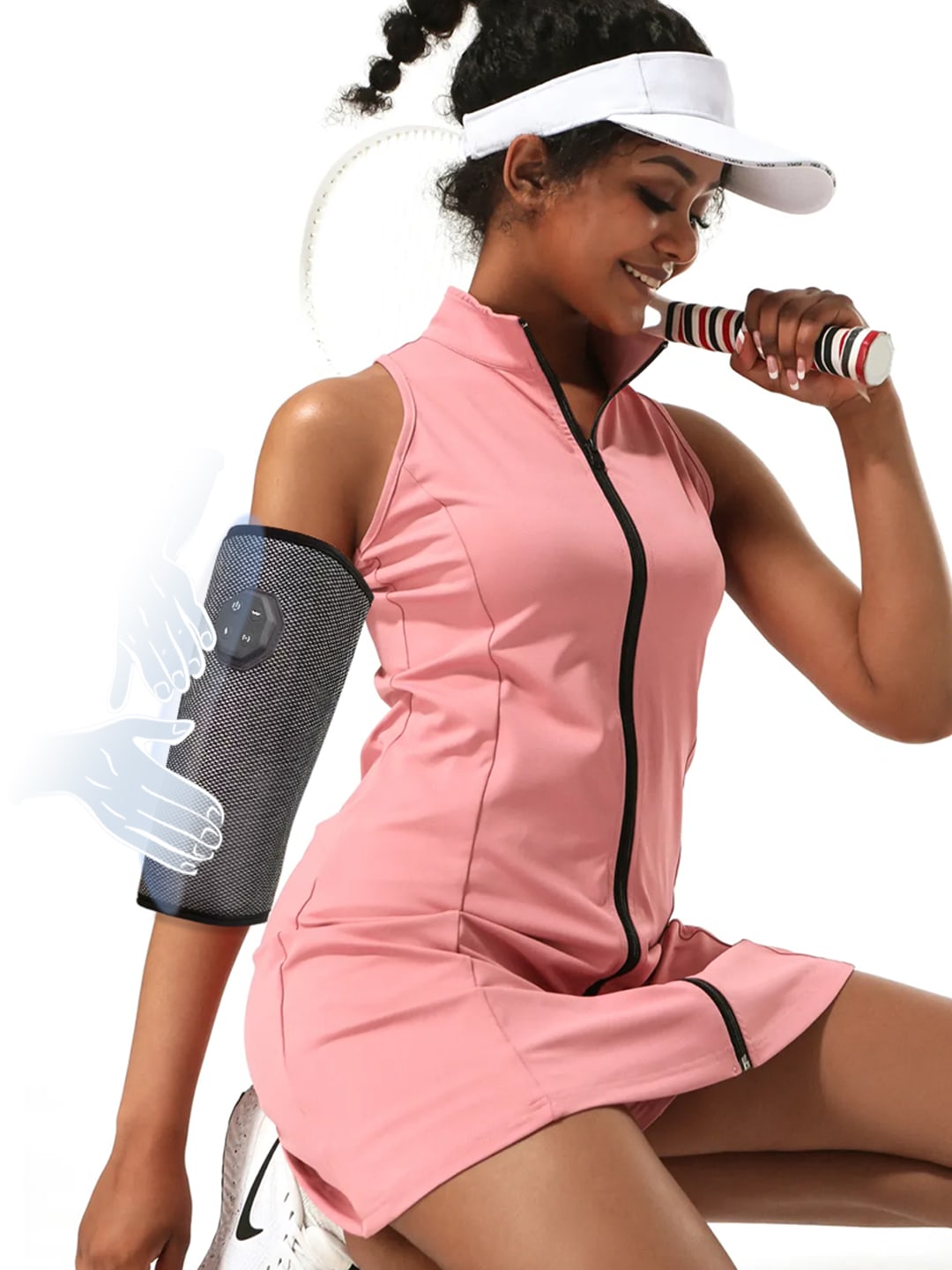Do Air Compression Leg Massagers Work? A 2024 Guide
- By Grace
- Updated on
If you're a fitness enthusiast, you know the feeling: legs that are screaming for mercy after a tough workout, or that general ache that reminds you of your commitment. You've probably heard whispers about various recovery tools, and one that's been making waves is the air compression leg massager. But does it actually live up to the hype, or is it just another gadget destined to gather dust? It's a fair question, especially when personal experiences, like one user's review of the KLCOSY Knee (leg arm) Massager, bring up points about durability versus noticeable pain alleviation. Let's pump up the discussion and find out.
An air compression leg massager essentially uses inflatable chambers to apply rhythmic pressure to your limbs. Think of it as a high-tech, automated massage therapist dedicated to your legs, arms, or knees. The recent KLCOSY review, highlighting both enhanced flexibility and some questions about long-term practicality, serves as a perfect springboard to explore what this technology offers, its potential pitfalls, and whether it’s a worthy addition to your recovery arsenal. We're not just looking at one device, but the whole squeeze play!
What Happens When Your Legs Scream "Uncle!"?
For those who push their limits, leg discomfort isn't a stranger. Whether it's the dreaded Delayed Onset Muscle Soreness (DOMS) that makes stairs your nemesis, general fatigue from endurance training, or the twinges from minor strains, your legs bear the brunt. This isn't just "ouch"; it's your body signaling it needs recovery. Ignoring these signals can sometimes lead to prolonged soreness or even minor setbacks in your training. It's really, really important to listen to what your body is telling you.
Your muscles, when worked hard, undergo micro-tears and accumulate metabolic byproducts. The recovery process involves repairing this tissue and clearing out waste. This is where concepts like active recovery come into play, aiming to facilitate these processes rather than just waiting it out. The goal is to get you back to your peak performance faster, and feeling less like you've wrestled a bear. And let's be honest, who wouldn't want that?
- Delayed Onset Muscle Soreness (DOMS): That familiar ache 24-72 hours post-exercise.
- Muscle Tightness: Reduced range of motion and a feeling of stiffness.
- Swelling or Puffiness: Often due to fluid accumulation after intense activity.
- General Fatigue: A heavy sensation in the limbs.

How Air Compression Leg Massagers Work Their Magic
So, how does an air compression leg massager actually help? It's not just about a comforting hug for your tired limbs, though that’s a nice bonus. These devices employ dynamic compression: air chambers within sleeves or boots inflate and deflate sequentially, typically starting from the extremity (like your foot) and moving upwards towards your torso. This action is designed to mimic the natural muscle pump of the body and the strokes of a massage therapist.
This rhythmic squeezing and releasing action is believed to enhance blood flow and promote lymphatic drainage. Better circulation means more oxygen-rich blood reaching your tired muscles and a more efficient removal of metabolic waste products (like lactic acid, though its role in soreness is complex). Improved lymphatic drainage helps reduce swelling and inflammation. It's not just a hug for your legs; it's a hug with a very specific, circulation-boosting purpose! You might be surprised to find out how sophisticated these "puffs" can be.
- Increased Blood Flow: Delivers more oxygen and nutrients to muscle tissues.
- Enhanced Lymphatic Drainage: Helps reduce swelling and remove waste products.
- Reduced Muscle Tension: The massaging action can help relax tight muscles.
- Mimics Natural Muscle Pump: Assists the body's natural circulatory processes.
Key Benefits of an Air Compression Leg Massager
The user experience with the KLCOSY device, where continuous use reportedly alleviated arm, leg, and knee pain and enhanced flexibility, points directly to some of the core benefits fitness enthusiasts seek from an air compression leg massager. When your legs feel better and move more freely, your overall performance and enjoyment of activity can significantly improve. It's about turning that post-workout grimace into a satisfied grin.
Beyond specific anecdotes, the broader benefits are compelling. Faster muscle recovery means less downtime between sessions and potentially reduced risk of overtraining injuries. The ability to manage DOMS can make consistent training more bearable. And let's not forget the relaxation aspect – a session can be a great way to unwind. Some devices also offer multi-functional treatment, addressing various needs from a single unit, which is a big plus for versatility. This is where a good compression massager legs guide would highlight these diverse advantages.
- Pain Relief: Can alleviate soreness and discomfort in muscles and joints.
- Enhanced Recovery: May speed up muscle repair and reduce recovery time.
- Improved Flexibility: Gentle, rhythmic pressure can help loosen tight tissues.
- Convenience: Offers an accessible recovery method at home, on your schedule.
- Reduced Swelling: Particularly beneficial after long periods of standing or intense workouts.

What to Look for in a Leg Compression Massager
The KLCOSY review also brought up an interesting point: its popularity might be relatively low, yet it boasts advantages like multi-functionality, combinable massage, adjustable intensity, and multi-purpose use in one machine. This highlights a crucial aspect for any prospective buyer of an air compression leg massager: features matter. A device that is safe and easy to use, with customizable settings, will always be more beneficial than a one-size-fits-all approach. Finding the best air compression leg massager often comes down to matching these features to your specific needs.
For fitness enthusiasts, adjustable intensity is key – what feels like a gentle squeeze on a light day might need to be ramped up after a grueling session. Multiple massage modes can target different sensations or areas. The coverage area (legs, arms, full boots) and portability are also practical considerations. You want a leg compression massager that adapts to you, not the other way around. To be honest, the variety out there can be a bit overwhelming, so knowing what to look for is half the battle.
- Adjustable Intensity Levels: Allows customization from gentle to deep pressure.
- Multiple Massage Modes: Different programs for various needs (e.g., sequential, pulsing).
- Coverage Area: Options for calves, thighs, full legs, or even arms.
- Portability & Power Source: Important for use at home, gym, or while traveling.
- Ease of Use & Cleaning: User-friendly controls and maintainable materials.
- Safety Features: Auto shut-off timers, pressure release valves.
Tips for Using Your Air Compression Leg Massager Effectively
Owning an air compression leg massager is one thing; using it effectively is another. Think of it as a valuable tool in your recovery toolkit – it complements, rather than replaces, other good habits like proper nutrition, hydration, and sleep. For fitness enthusiasts, consistency is often key. A 20-30 minute session post-workout or before bed can make a noticeable difference. It’s about integrating it into your routine seamlessly.
Always ensure the sleeves or boots fit snugly but not too tightly – you want effective compression, not a tourniquet! Start with lower intensity settings and gradually increase as you get comfortable. Listen to your body; if something feels off, adjust or stop. Staying hydrated also helps your body's natural recovery processes, making the massager's job easier. For those seeking an air compression leg massager australia based retailers often provide good local support and advice too, so don't hesitate to ask questions before purchasing. This is a crucial part of any good compression massager legs guide.
- Stay Hydrated: Water aids in flushing out toxins and muscle recovery.
- Find the Right Fit: Ensure sleeves are snug but not constricting.
- Start Slow: Begin with lower intensity and shorter durations.
- Listen to Your Body: Discontinue use if you experience pain or discomfort.
- Be Consistent: Regular use often yields the best results.
- Combine with Other Recovery Methods: Don't neglect stretching, foam rolling, or proper cool-downs.
So, does an air compression leg massager really work? The consensus, backed by user experiences like the one with the KLCOSY device (despite its specific concerns), and the science of how these devices function, points to a resounding "yes" for many. They can be a genuinely valuable tool for fitness enthusiasts looking to enhance recovery, alleviate pain, and improve flexibility. While no gadget is a magic bullet, the targeted pressure and improved circulation offered by a quality leg compression massager can make a tangible difference in how your legs feel and perform.
The KLCOSY story reminds us that even less-promoted devices can pack a punch with unique features, and that individual experiences with durability can vary. The key is to understand what air compression leg massager technology offers as a whole, what features are important for *your* needs (like adjustable intensity or multi-functionality), and how to use it effectively as part of a holistic recovery strategy. It's about finding the right squeeze for your routine and giving your hard-working limbs the TLC they deserve. Ultimately, a good compression massager can be a fantastic partner in your fitness journey.
Frequently Asked Questions :
Does air compression help leg pain?
Yes, air compression leg massagers can significantly help with various types of leg pain. They work by improving blood circulation and promoting lymphatic drainage. This increased blood flow delivers more oxygen and nutrients to tired or sore muscles, aiding in their repair and reducing inflammation. The rhythmic compression can also help to alleviate muscle stiffness and tension, which are common culprits behind leg pain, especially after exercise or long periods of standing. For many users, this translates to noticeable pain relief and a feeling of lighter, more refreshed legs.
How to use an air compression leg massager?
Using an air compression leg massager is generally straightforward. First, ensure the leg sleeves or boots are positioned correctly and fit snugly but comfortably—not too tight. Connect the hoses to the control unit, plug it in, and select your desired program and intensity level. Most devices offer various modes (e.g., sequential, full-leg squeeze) and pressure settings. It's advisable to start with a lower intensity and shorter duration (e.g., 15-20 minutes) to see how your body responds, then gradually increase as comfortable. Use it while seated or lying down in a relaxed position. Always follow the manufacturer's specific instructions for your model.
Are they good for multi-functional treatment?
Yes, many air compression leg massagers are excellent for multi-functional treatment. Their benefits extend beyond simple muscle soreness. They can aid in reducing swelling (edema), improving circulation for those with certain conditions (though consultation with a doctor is advised for medical issues), promoting relaxation, and easing restless leg sensations for some individuals. Higher-end models often come with different massage modes and targeted zones, allowing users to address various needs, from post-workout recovery for athletes to general leg fatigue relief for individuals who stand or sit for long periods. The key is their ability to enhance circulatory and lymphatic system function, which has widespread benefits.




